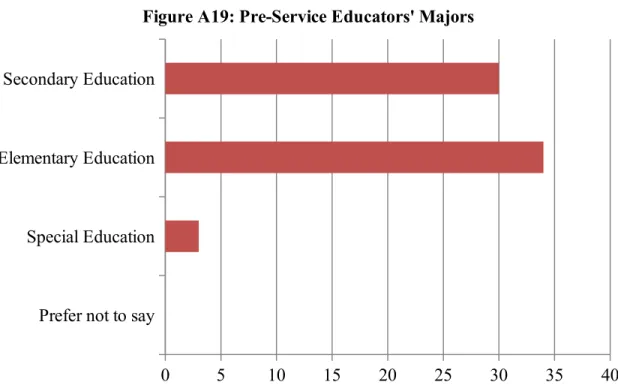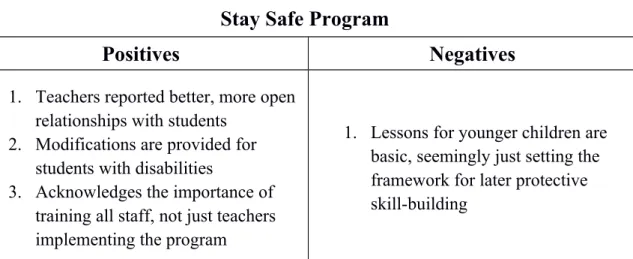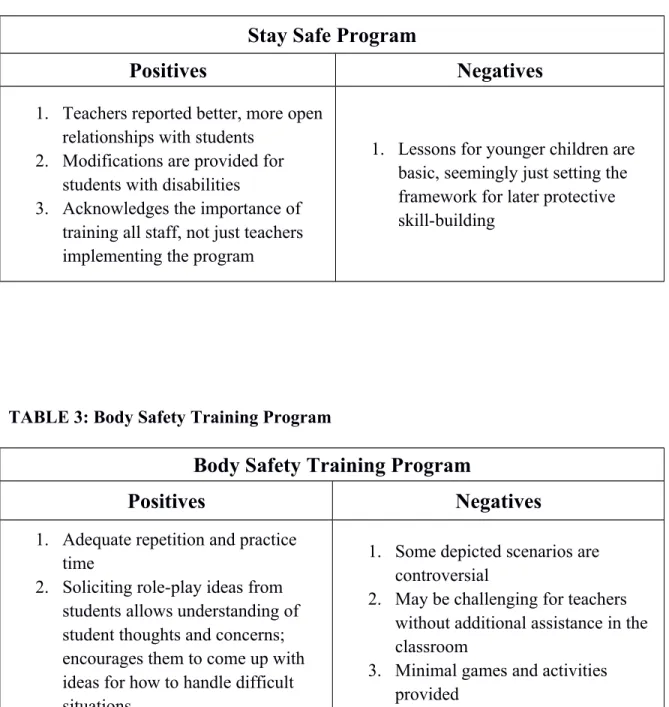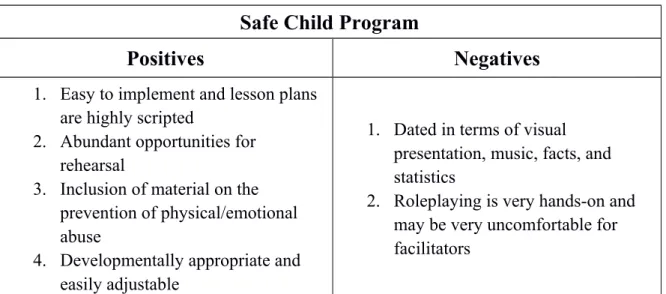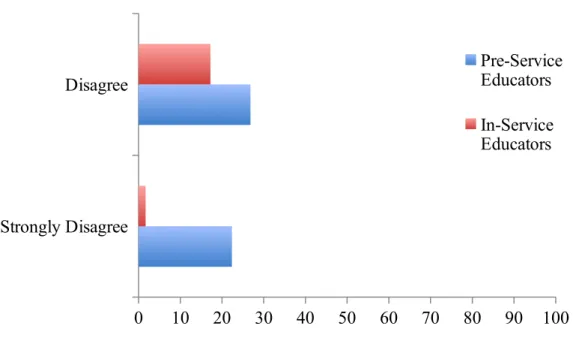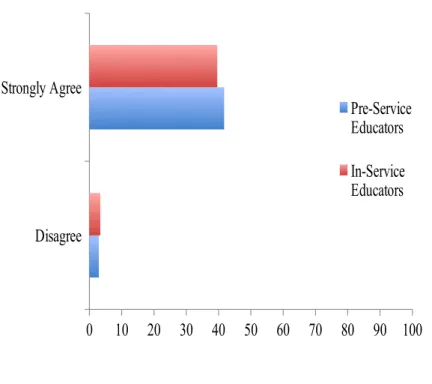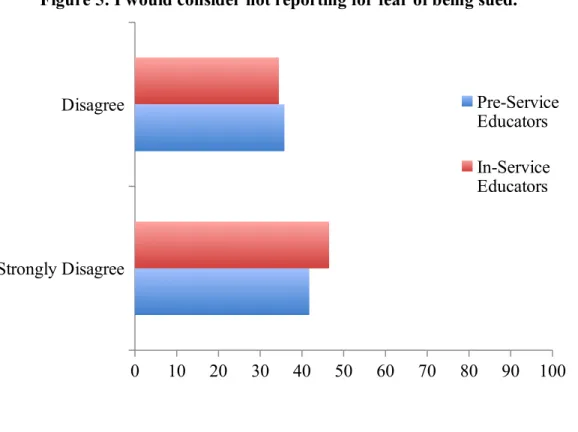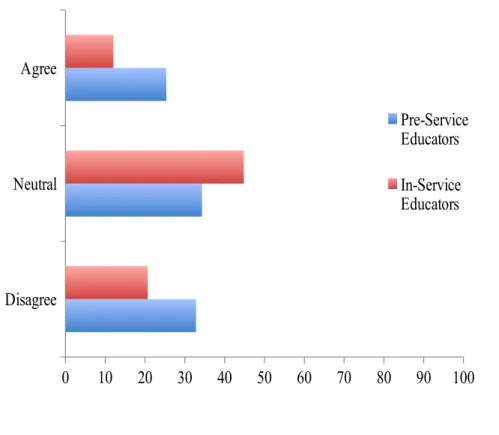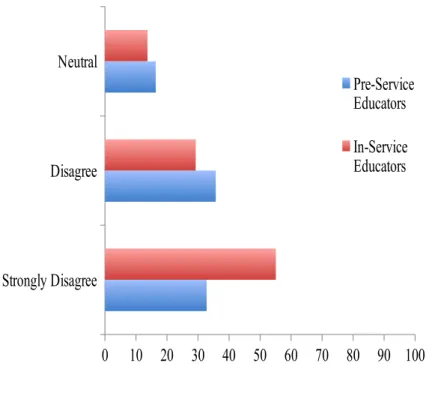An examination of Mississippi teachers' likelihood to report child sexual abuse and the potential effect on victims' disclosure rates. Darkness to Light estimates that 400,000 babies born in the United States will be victims of child sexual abuse. While school personnel identify 52% of all cases of child sexual abuse (Darkness to Light, 2006), less than 30% of suspected cases are formally reported (Kenny, 2001).
Many deterrents exist for teachers who are reluctant to report suspected child sexual abuse.
Literature Review
Katerndahl, Burge, Kellogg, and Parra (2005) found more of a relationship between acculturation level and reporting on child sexual abuse than with ethnicity itself and reporting. These are all factors that increase the difficulty in reporting child sexual abuse (Sudderth, 2003). Many victims of child sexual abuse report emotional or psychological problems or misconduct as a result of their victimization.
Darkness to Light (2006) reports that victims of child sexual abuse are more likely to become involved in prostitution. Female victims of sexual abuse are 2.2 times more likely to become teenage mothers, with 45% reporting a history of child sexual abuse. Child sexual abuse is indirectly associated with rates of teen suicide, teen runaways, and teen births (Finkelhor & Jones, 2012).
McGuire and London (2017) found that 70% of clinicians believed that decreased school performance would be related to child sexual abuse. Darkness to Light (2006) estimated that 400,000 babies born in the United States will become victims of child sexual abuse. While Finkelhor and Jones' research centers around substantiated reports of sexual abuse, Darkness to Light (2006) found that only about 4-8% of child sexual abuse reports are fabricated.
Disclosure caused by recall of forgotten or repressed memories of sexual abuse. CAPTA's description of child sexual abuse is considered the federal definition from which individual states drew their own definitions. In a self-report survey distributed by McIntyre (1999), teachers assessed their own awareness of the signs of child sexual abuse.
Only one third of child sexual abuse cases are identified; only 52% of these cases are reported by school staff (Darkness to Light, 2006).
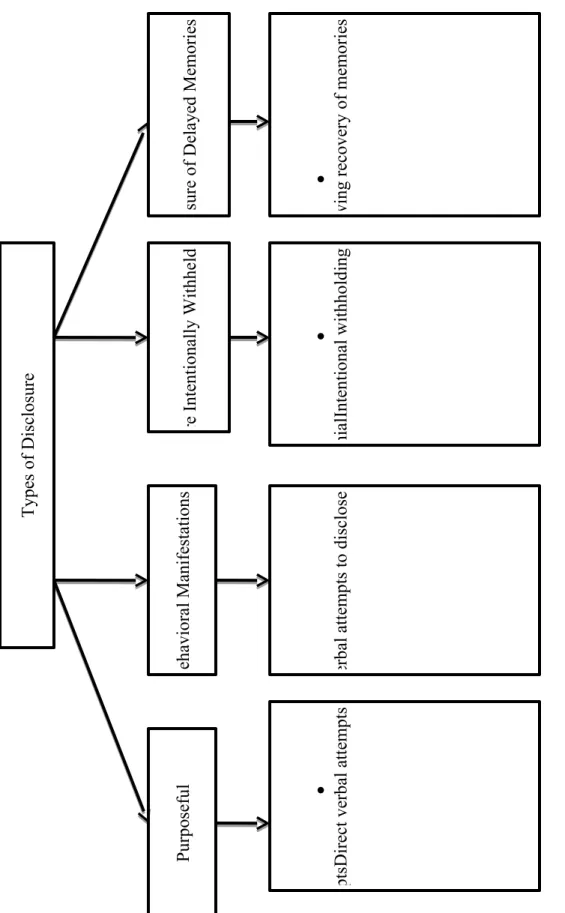
Stay Safe Program
Body Safety Training Program
Safe Child Program
Methodology
After reading an article published in the Journal of Child Sexual Abuse by Walsh et al. 2010), the researcher chose to use the newly designed twenty-one item Likert-type format survey to measure teachers' attitudes and beliefs regarding reporting child sexual abuse, “Twenty-one item Self-Report Teachers' Reporting Attitude Scale for Child Sexual Abuse. Regarding the reporting of child sexual abuse, to what extent do you agree or disagree with the following statements?” which was created by Walsh et al. Despite these limitations, the researcher chose to proceed with the survey because it was the most recently developed scale of its kind found. Initial testing on the part of Walsh et al. 2010) was successful enough for the researcher to believe that it would be effective in small-scale research.
Once the survey was selected and edited, the researcher submitted it, along with recruitment letters and a consent to participate form (Appendix B), to the University of Mississippi Institutional Review Board for approval, which was granted after review by the committee. Two teachers – one from a middle school and the other from a high school – approached the researcher. After the researcher received approval from the school principal, a recruitment email was sent to teachers of all curriculum areas for grades 7-9.
If teachers who received a recruitment email from the researcher were willing to participate in the study, they followed a link in the email to a Qualtrics survey uploaded by the researcher. The survey was also distributed to 250 undergraduate and graduate education majors at the University of Mississippi. Susan McClelland, Chair of the Department of Teacher Education, who gave consent and referred the researcher to the Office of Student Advising and Field Experience (SAFE Office), which acts as a liaison between College of Education faculty and education majors when mass e-mail is required. to be dispersed.
While the survey was not sent to elementary school teachers, it was sent to undergraduate elementary students. The rationale for sending the survey to undergraduate students seeking a degree in education was to determine whether preservice teachers were exposed to the necessary information about detecting and reporting child sexual abuse among their prospective students.
Survey Analysis
- The procedures for reporting child abuse are familiar to me
- Reporting child sexual abuse can enable services to be made available to children and families. (Figure 4)
- Teachers who report child sexual abuse that is unsubstantiated can get into trouble. (Figure 6)
- I would be apprehensive to report child sexual abuse for fear of family/community retaliation. (Figure 7)
- I would be reluctant to report a case of child sexual abuse because of what parents will do to the child if he or she is reported. (Figure 8)
This section will assess and compare pre-service and in-service teachers' beliefs about and knowledge of mandatory reporting laws and the protections they provide. While most of the pre-service teachers surveyed are keen to fulfill their professional duty as a mandatory reporter, 26.87% of the participants disagree and 22.39%. If the pre-service and in-service teachers who participated in the survey were truly aware of the laws of the state in which they teach, they would have no problem answering either "Strongly Agree" or "Agree" to Statements 1- 3 listed above.
According to the results received, the answers to Statements 1 and 3 correspond to the researcher's expectations, with 88.06% of pre-service and 93.10% of in-service. Strongly agree" to Statement 3, "Reporting sexual abuse of children can make it possible to provide services to children and families." The researcher anticipated the response of pre-service teachers regarding Statement 2, "The procedures to report child abuse is known to me."
Over half (64.19%) of the pre-service participants responded negatively or neutrally to statement 2, while an overwhelming majority (81.03%) of the in-service teachers responded positively or neutrally. This gap is most likely attributable to the amount of experience between post- and pre-service teachers; those currently working in education are more likely to have either dealt with a child sexual abuse case, attended a professional development course where child abuse and neglect was the topic, or both. A majority of preschool teachers (77.61%) report that they would still opt out, despite fear of being sued.
As can be seen from the responses of pre-service educators, there is a belief that reporting without justified abuse can lead to harm to the reporter; their answers vary almost equally between "agree neutral agree" and "disagree". The following statements are among the few in the survey that relate to teachers' attitudes towards reporting child sexual abuse.
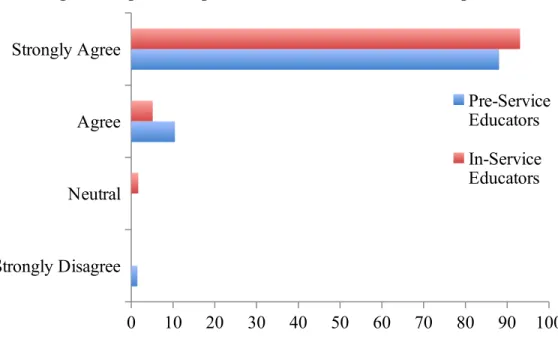
ConclusionStrongly Disagree
I would still report child sexual abuse even if my administration disagreed with me. (Figure 10)
I lack confidence in the authorities to respond effectively to reports of child sexual abuse. (Figure 11)
Overall, the survey results reveal that, ultimately, pre- and in-service educators show a commitment to their duties as mandated reporters. While there is general consensus for most of the statements, some of them – such as 4.3.2 and 4.3.5 – show a wide range of responses. This difference can be attributed to the difference in the amount of experience between pre- and in-service teachers; working actively in the field of education alongside students, parents, colleagues and administrators compels one.
In many cases, the data collected in the survey for this study differs greatly between tenured and in-service teachers. School faculty members spend at least thirty-five hours a week in the presence of potential victims; in some cases, students may see their teachers more than their own parents. According to the results of the survey distributed by the researcher, many pre-service teachers – and some in-service teachers – have no practical knowledge on how to apply the relevant legislation.
For some of the participants, there is a lack of faith in the current system to effectively help the children who are reported; others do not want to act against the wishes of their administration. Based on a review of the existing literature, the solution to the problem of low teacher reporting is based in relationships and training. For in-service teachers, introducing child sexual abuse prevention programs into the regular curriculum may be the most useful approach.
After observing the data collected in the survey, the researcher concludes how the pre-service and in-service educators who were interviewed have promoted health. relationships with their current and past students. Many of the questions in the survey relate directly to a participant's confidence in the school and administration to properly resolve the issue.
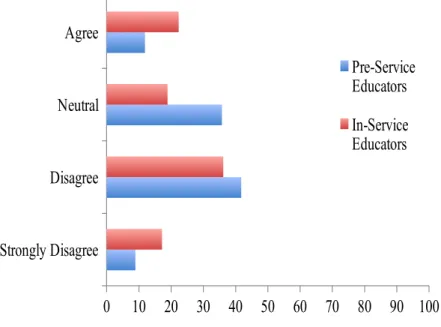
Conclusion
Neighbors, parents and professionals lack the skills – and sometimes even the will – to recognize the signs and symptoms of child sexual abuse. Resources are available for those directly dealing with suspected child sexual abuse, or those who wish to educate themselves and others (Appendix C). A preliminary map of individual, relational, and societal factors impeding disclosure of childhood sexual abuse. Child abuse and neglect.
Disclosures of Sexual Abuse by Puerto Rican Children: Oppression and Cultural Barriers. Journal of Child Sexual Abuse, 2, 21–35. Differences in experiences of childhood sexual abuse among Hispanic and Anglo female adults in primary care. Journal of Child Sexual Abuse. The impact of childhood sexual abuse on adolescent outcomes: The roles of gender, poverty, and revictimization. Journal of Child Sexual Abuse.
Educators have a unique role in reporting suspected abuse.” attitudes toward reporting child sexual abuse: Problems with existing research leading to new scale development. Exploratory factor analysis and psychometric evaluation of the Teacher Report Attitude Scale for Child Sexual Abuse.". It is important for teachers to be involved in reporting sexual abuse of children to prevent long-term consequences for children. a).
Agree Neither Disagree Disagree Strongly agree p) It is a waste of time for him. report child sexual abuse because no one will follow up on the report. I would find it difficult to report child sexual abuse because it is difficult to gather enough evidence. u).
